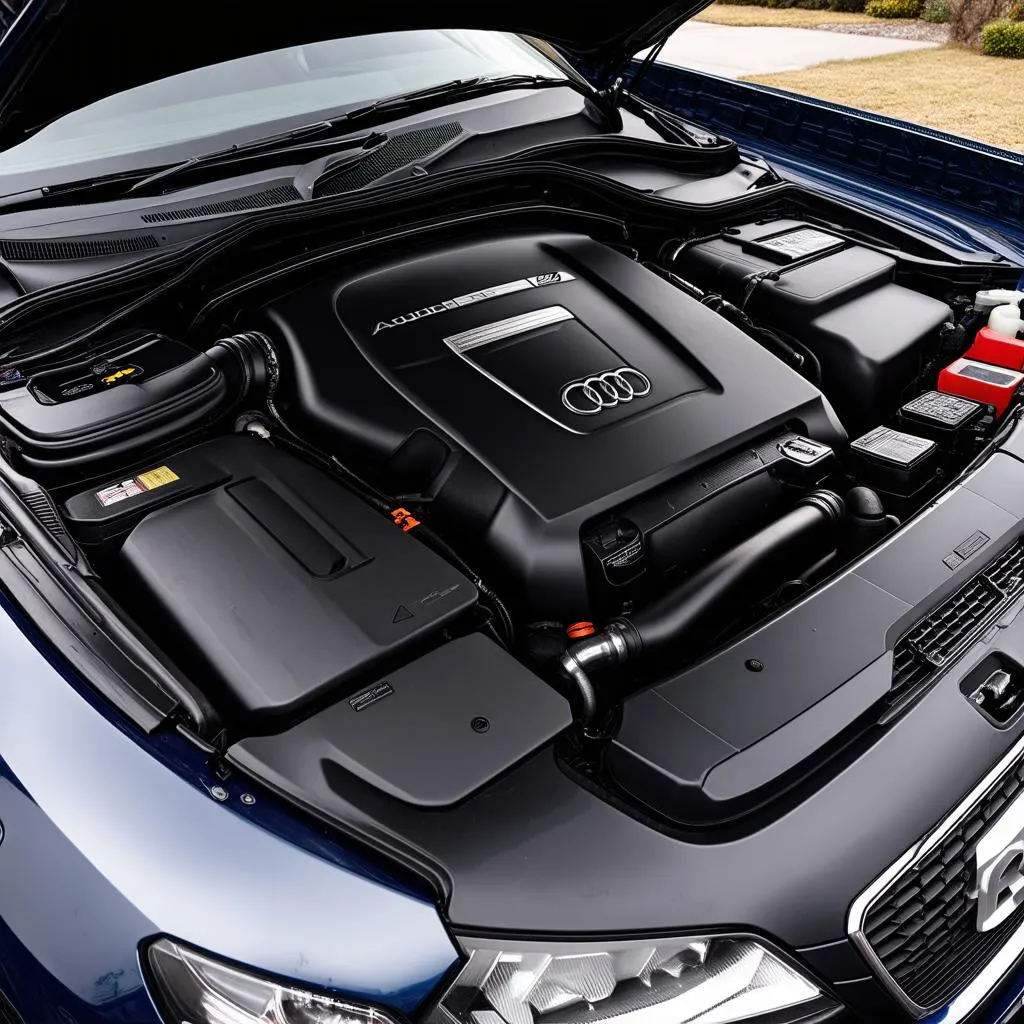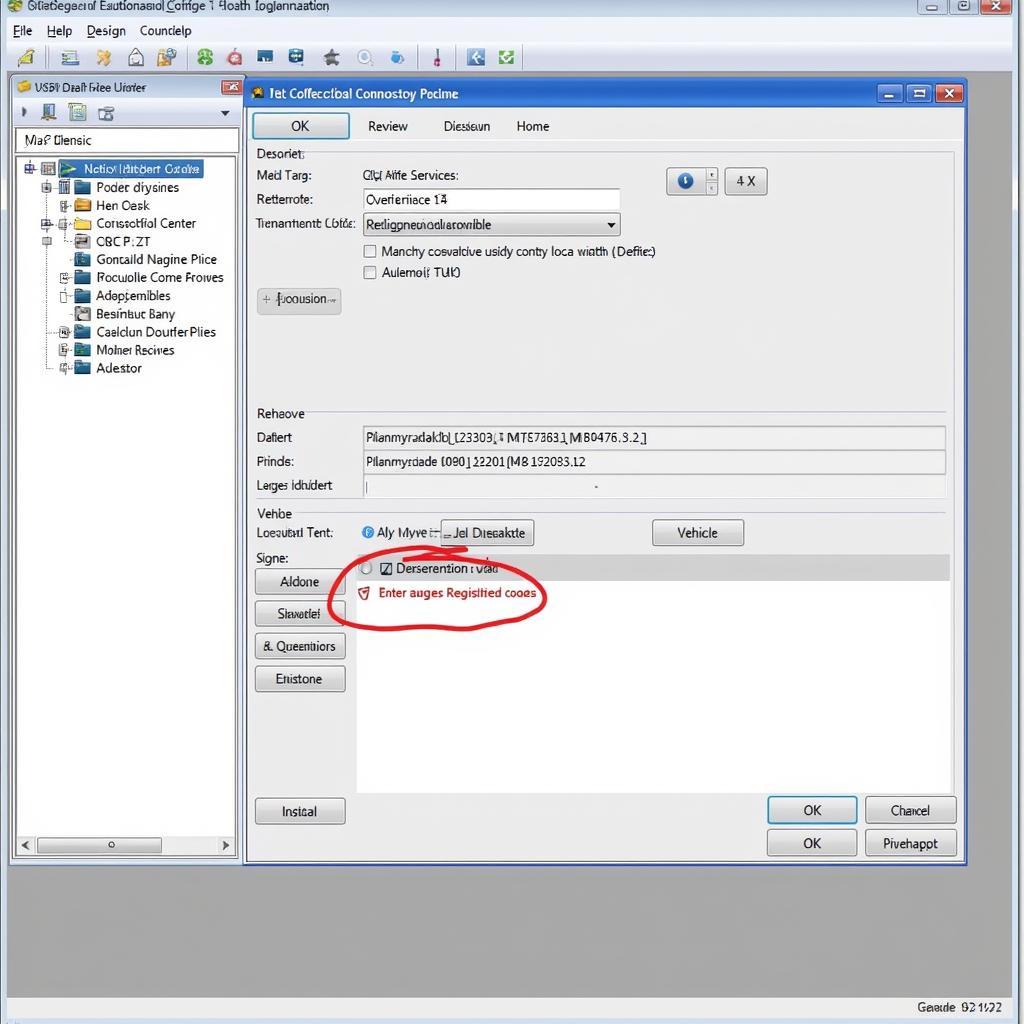The Audi A4 B5, produced between 1994 and 2001, remains a popular choice for its performance and reliability. However, like any aging car, it can develop issues. Understanding Audi A4 B5 VCDS codes is crucial for diagnosing and resolving these issues effectively. This comprehensive guide will delve into the world of VCDS (VAG-COM Diagnostic System) codes for the Audi A4 B5, providing you with the knowledge to tackle those pesky fault codes head-on.
What are Audi A4 B5 VCDS Codes?
Your A4 B5’s onboard computer system continuously monitors various sensors and modules. When a problem is detected, it logs a Diagnostic Trouble Code (DTC), also known as a VCDS code, in its memory. These codes, presented as a combination of letters and numbers, act as clues to pinpoint the source of the problem.
For instance, a code like “P0171” indicates a “System Too Lean (Bank 1).” This tells you that the engine is receiving too much air compared to fuel. Armed with this information, you can then focus your diagnostic efforts on components related to air/fuel mixture, such as the mass airflow sensor or oxygen sensor.
Why Are VCDS Codes Important?
Ignoring VCDS codes is akin to driving with your eyes closed. They provide valuable insights into your A4 B5’s health, enabling you to:
- Identify the root cause of problems: Instead of resorting to guesswork, VCDS codes point you directly to the faulty system or component.
- Save time and money: Diagnosing issues with VCDS codes prevents unnecessary part replacements and reduces labor costs.
- Improve performance and fuel efficiency: Addressing issues promptly based on VCDS codes ensures optimal engine performance and fuel economy.
- Prevent further damage: Early detection through VCDS codes can help prevent minor problems from escalating into major (and expensive) repairs.
How to Read and Interpret VCDS Codes
VCDS codes follow a standardized format. Let’s break down the code “P0171” as an example:
- First character: “P” stands for Powertrain, indicating a problem related to the engine or transmission. Other categories include “B” (Body), “C” (Chassis), and “U” (Network).
- Second character: “0” signifies a generic code, applicable to all OBD-II compliant vehicles. Manufacturer-specific codes start with “1.”
- Third character: “1” denotes a problem related to the fuel and air metering system.
- Last two digits: “71” is the specific code assigned to a “System Too Lean (Bank 1)” issue.
Common Audi A4 B5 VCDS Codes and Their Meanings
While numerous VCDS codes can appear for the A4 B5, some are more prevalent than others. Here are a few examples:
- P0420: Catalyst System Efficiency Below Threshold (Bank 1) – This code usually signals a failing catalytic converter.
- P0101: Mass Air Flow (MAF) Sensor Circuit Range/Performance Problem – This indicates an issue with the MAF sensor or its wiring.
- P0300: Random/Multiple Cylinder Misfire Detected – This code points to a misfire in one or more cylinders, potentially caused by spark plugs, ignition coils, or fuel injectors.
- P0171: System Too Lean (Bank 1) – As mentioned earlier, this code suggests a problem with the air/fuel mixture, possibly due to a vacuum leak or a faulty oxygen sensor.
- P0130: Oxygen Sensor Circuit Malfunction (Bank 1, Sensor 1) – This indicates a problem with the primary oxygen sensor on Bank 1, affecting fuel/air mixture regulation.
Using VCDS Software for Diagnosis and Troubleshooting
While this guide provides a starting point, professional-grade diagnostic software like VCDS (formerly VAG-COM) offers comprehensive access to your A4 B5’s systems. VCDS allows you to:
- Read and clear fault codes: Identify and erase existing codes to confirm successful repairs.
- View live data streams: Monitor sensor readings in real-time to analyze system performance.
- Perform output tests: Activate specific components like actuators and valves to verify their operation.
- Access advanced functions: Delve deeper into module-specific settings for customization and troubleshooting.
 Audi A4 B5 VCDS Scan
Audi A4 B5 VCDS Scan
Frequently Asked Questions about Audi A4 B5 VCDS Codes
Q: Can I drive my A4 B5 with a VCDS code?
A: While some codes might not immediately hinder drivability, it’s crucial to address them promptly to prevent potential damage and ensure optimal performance.
Q: Do I need a professional to diagnose and fix VCDS codes?
A: With basic mechanical skills and a reliable VCDS tool, many A4 B5 owners can diagnose and fix simple issues themselves. However, more complex problems might require professional expertise.
Q: Where can I find reliable information on Audi A4 B5 VCDS codes?
A: Online forums dedicated to Audi vehicles, reputable automotive websites, and factory repair manuals are valuable resources for information on VCDS codes.
Tips for Working with VCDS Codes
- Clear codes after repairs: After addressing a code, clear it and retest the system to ensure the problem is resolved.
- Note code occurrences: Keep a record of when and how often specific codes appear to identify recurring issues.
- Research thoroughly: Before replacing any parts, research the specific code and potential causes to avoid unnecessary expenses.
Conclusion
Understanding and utilizing Audi A4 B5 VCDS codes is essential for maintaining the health and performance of your vehicle. While this guide provides a foundation, remember that professional-grade diagnostic tools like those offered by Cardiagtech can greatly enhance your troubleshooting capabilities. By empowering yourself with knowledge and the right tools, you can keep your A4 B5 running smoothly for years to come.
 Audi A4 B5 Engine Bay
Audi A4 B5 Engine Bay
For further assistance and expert advice on diagnostic tools for your Audi A4 B5, connect with CARDIAGTECH, your trusted partner in automotive diagnostics and repair.


